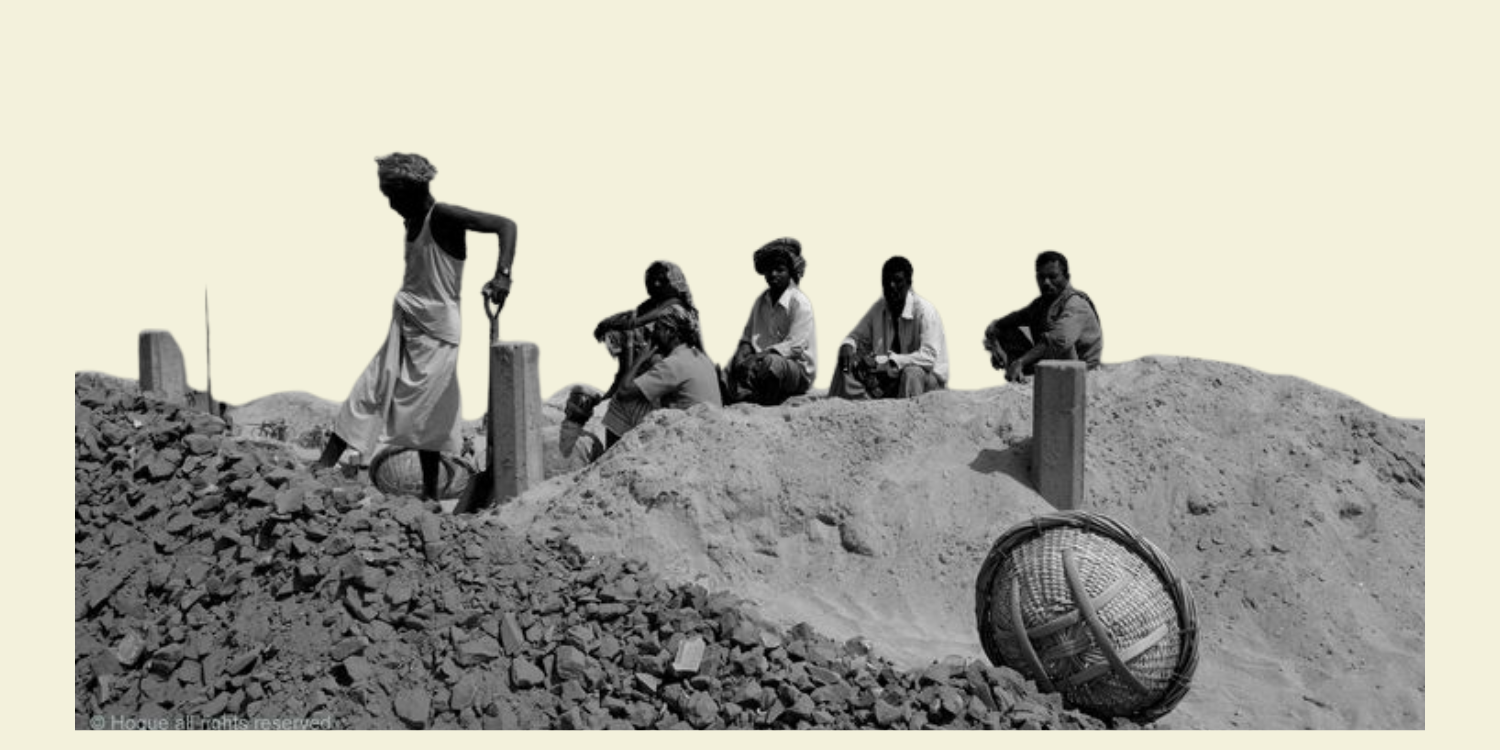Inter-state water disputes pose complex challenges, intertwining the needs of various stakeholders with ecological imperatives. This article delves into the Mahadayi River dispute, highlighting the perspectives of Karnataka, Maharashtra, and Goa, while probing the perplexing questions surrounding equitable water allocation and environmental preservation. By analysing the intricacies of the dispute and proposing actionable measures, it advocates for a consensus-based approach, enhanced water management strategies, and expedited dispute resolution mechanisms to ensure sustainable water governance.
Inter-state river disputes epitomise the intricate balance between developmental needs and environmental conservation. The Mahadayi River dispute, involving Karnataka, Maharashtra, and Goa, underscores the multifaceted challenges inherent in equitable water allocation and ecological preservation. This article navigates through the perspectives of each state, elucidating their concerns and aspirations, while addressing the overarching imperative of fostering consensus and sustainable solutions.
The Mahadayi River, also known as Mandovi, is not just a water body but a lifeline coursing through the heart of Karnataka, Maharashtra, and Goa. Originating from the picturesque Jamboti Ghat in Karnataka’s Belgaum district; this river meanders its way for 111 kilometres, nurturing ecosystems, supporting livelihoods, and quenching the thirst of millions along its path.
One of the most contentious issues surrounding the Mahadayi River is the ongoing dispute over water sharing among the states it traverses. With Goa being the lowermost riparian state, it holds a significant stake in the equitable distribution of Mahadayi’s waters. However, the complexities arise from the fact that Goa, despite having the largest geological area in the basin, also has the smallest share of the river’s length – 76 kilometres out of the total 111 (Mohanty, 2023).
The Mahadayi basin encompasses vital ecosystems and human settlements, with Goa’s portion alone constituting 42.70% of the state’s area and supporting over half of its population (Das, 2023). It’s not just a river; it’s the lifeblood of Goa, sustaining diverse flora and fauna, ancient archaeological sites, and providing for the agricultural, domestic, and industrial needs of its inhabitants.
In Karnataka, the river is joined by several tributaries such as Singar nala, Kotni nala, Doli nala, Irti nala, and Bailnadi, contributing to its flow and significance. As it journeys through Goa, known locally as Mhadei, it is further enriched by ten main tributaries before its grand rendezvous with the Arabian Sea.
The Mahadayi’s importance cannot be overstated. It not only provides water for irrigation and drinking purposes but also nurtures ecosystems, sustains wildlife, and enriches the cultural heritage of the regions it touches. From cascading waterfalls to serene islands, from bustling townships to ancient archaeological sites, the Mahadayi is a source of life, inspiration, and wonder.
However, amidst the marvels it bestows upon the land, the river’s fate hangs in the balance due to the persistent water dispute among the states. The tussle over water sharing has escalated over the years, fueled by competing demands for irrigation, drinking water, industrial use, and ecological conservation.
As the stakeholders grapple with finding a fair and sustainable solution, it’s imperative to remember that the Mahadayi River is not just a resource to be divided but a legacy to be preserved for generations to come. Any resolution must prioritise the river’s ecological integrity, ensure equitable access for all stakeholders, and uphold the principles of sustainable water management.
In the labyrinth of legal battles and political negotiations, the voice of the river itself often gets drowned. Yet, it continues to flow, carrying within its waters the hopes, dreams, and aspirations of millions. The Mahadayi Water Dispute is not just about allocation; it’s about striking a delicate balance between development and conservation, between human needs and environmental stewardship.
The Mahadayi River embodies the interconnectedness of life and the fragility of our ecosystems. As we navigate the complexities of this dispute, let us not forget that our actions today will shape the destiny of this sacred river and the communities that depend on it for generations to come.
The Dispute Unravelled
The conflict escalated when Karnataka unveiled plans to divert Mahadayi’s tributaries to the Malaprabha River, triggering concerns in downstream Goa about dwindling water flow, ecological disruption, and agricultural impacts. Similarly, Maharashtra’s proposal to construct a dam near Virdi village, initially accepted with conditions, later raised apprehensions about altered water flows and ecological consequences.
Perspectives of the Riparian States
Karnataka’s Case: Karnataka is the state where the Mahadayi river originates. Karnataka contends that the Mahadayi waters are vital for fulfilling the drinking water needs of urban centres like Hubli-Dharwad and supporting irrigation projects crucial for agricultural sustainability. Emphasising equitable apportionment, Karnataka seeks a balanced allocation that addresses both human and agricultural requirements. The State of Karnataka claimed an allocation of 24.15 TMC (24.15 TMC towards consumptive usage and 14.571 TMC towards non-consumptive usage) [Para 30-31, Page 92-93, Vol 1, MWDT Award], on the premise that the dependable yield of the river basin at 75% dependability was 199.60 TMC. Karnataka contends that such usage would not prejudicially affect the interests of the State of Goa or its inhabitants [(x), Page 351, Vol 3, MWDT Award]. One of the main contentions of Karnataka is that Goa has not done a detailed yield study of the Mahadayi basin of its own which is why the dispute is unresolved [(xxxi), Page 372, Vol 3, MWDT Award]. The Government of Karnataka has raised a contention that because there is no existing agreement, decision of tribunal prohibiting construction, or restraining orders, it went ahead with construction of the Kalasa-Banduri dam but no diversion has taken place. The Central Government had also written to Karnataka asking it to obtain the necessary environmental and forest clearances [(iv), (v), Pages 375, 376, Vol 3, MWDT Award]. Entire weight of the claims of Karnataka rest on the reasoning that the Hubli-Dharwad region is a draught region, and the proposed diversion is for drinking water and drinking water project is a top priority according to National Water Policy 2002 [Pages 428-433, Vol 3, MWDT Award].
Maharashtra’s Case: Maharashtra advocates for irrigation and drinking water projects reliant on Mahadayi’s waters. Its stance underscores the necessity of water resources for sustaining agricultural productivity and catering to growing urban demands, necessitating a fair share of the river’s resources. Maharashtra has stated that its need for water would be for Irrigation, Power Generation, Drinking purposes, Industrial purposes, Navigation, Fisheries, Storages, Diversion of water outside basin, etc. [(xxxviii), Page 519, Vol 3, MWDT Award]. Maharashtra has also raised a demand for a share in the power which would be generated in the Kali Hydropower Project as result of diversion from the Mahadayi river by Karnataka [(xliii), Page 523, Vol 3, MWDT Award]. Maharashtra has prayed for an allocation of 180 Mcum of water from the Mahadayi River [(c), Page 524, Vol 3, MWDT Award].
Goa’s Case: Goa, as the downstream state, highlights its reliance on Mahadayi’s waters as a primary source of freshwater. With the majority of the river’s length traversing its territory, Goa expresses concerns about the adverse effects of diversion on its ecology and emphasises the need for proportionate apportionment, considering issues like salinity ingression. Goa raised a contention, which was then also held to be true by the Tribunal that diversion of any kind, would cause severe and irreparable damage to the ecology of the Mahadayi basin, including Wildlife Sanctuaries etc located therein and degrade and impact the groundwater flow [Paras 982, 985, Page 2239-2243, Vol 11, MWDT Award]. The expert witness for Goa contended that 50.07 TMC would be the volume of flow of water required to maintain ecological flow of the Mahadayi river. Goa has also raised serious concerns about diversion of water by Karnataka stating that such diversion will adversely affect the river navigation within Goa and also the loading capacity of barges [(xxvi), Pages 126-127, Vol 2, MWDT Award]. In the event that the flow of water in Mahadayi river is reduced, Goa states that there would be excessive sedimentation at the mouth of the river and would seriously hamper river navigation near the Panaji port area [(xxx), Pages 131-132, Vol 2, MWDT Award]. Goa also further contends that any reduction in flow of the Mahadayi river would negatively impact the tourism industry thus causing loss of revenue for the State [(xxviii), Pages 128-129, Vol 2, MWDT Award]. According to Goa what the Mahadayi project is set to do is to destroy permanently an area, rich in biodiversity, which ranks second in India after Sundarbans and eighth in the world as the finest Tiger habitat, and is home to many species of flora and fauna, including endangered Wroughton’s Free-tailed bat and Theobald’s Tomb bat [(xlv), Pages 152-153, Vol 2, MWDT Award]. Another concern raised by Goa is with respect to the tiger population in that part of the western ghats. Goa contends that any reduction in flow of the river will adversely affect the tiger population [(xlvii), (xlviii), Pages 303-304, Vol 2, MWDT Award]. Goa states that as per the Doctrine of Public trust and Precautionary Principle, by no standard of imaginations, the State of Karnataka and State of Maharashtra, can be permitted to carry on their construction, and divert the water from Mhadei River into any other basin or for that matter, to divert any water from Mhadei River [(lv), Pages 308-309, Vol 2, MWDT Award]. Goa has also continuously and vociferously contended that Mahadayi river is one of its largest sources of fresh water and therefore any reduction in its flow will have disastrous effects for the State.
Guidelines laid down by Hon’ble Supreme Court:
Firstly, let us take a look at certain guidelines principles laid down by the Hon’ble Supreme Court with respect to resolution of water disputes in re: Cauvery Water Disputes Tribunal – 1993 Supp (1) SCC 96(2), this Hon’ble Court (5 judges) was concerned with an inter-state water dispute concerning the river Cauvery between the State of Karnataka (the upper riparian State) and the State of Tamil Nadu (being the lower riparian State) [Para 3]. The issue urged by Tamil Nadu was whether Karnataka could by way of construction works in Karnataka appropriate water upstream so as to prejudice the interests downstream [Para 11]. The Supreme Court laid down the following legal principles [Para 71 and 72]:
- Each state has an equality of right to share in the waters of a river if it is a riparian State;
- Since the action of one riparian State reaches, through the agency of natural laws, into the territory of another riparian State, the question of the extent and limitation of the rights of the two States is a justiciable dispute between them;
- Any more than a just and reasonable use would be wrongful or injurious to the downstream riparian State;
- Thus, the otherwise absolute and exclusive right to all water flowing past its land (without obstruction) of any riparian state is subject to a just and reasonable use by an upstream riparian state;
- The distribution and allocation of waters between riparian states must be done on the basis of the “equitable share of each State” – this will depend upon the facts of each case.
Secondly, the Hon’ble Supreme Court also laid down further guidelines in State of Karnataka v State of Tamil Nadu (2018) 4 SCC 1 (3 judges) which are as follows:
- The State of Karnataka submitted that the equitable share of water allocated to the party states “had to be based on needs rather than the flow of the river”. On the other hand, the State of Tamil Nadu argued that equitable share did not mean equal apportionment/division of the quantity of water but meant that there should be equal consideration and equal economic opportunity to each of the states [Para 169]. This Court held:
Relying on the Helsinki Rules of 1966, that the Harmon doctrine (which enunciated that every state being sovereign had the right to do whatever it liked with the waters within its territorial jurisdiction irrespective of the injury that might be caused to neighbouring states by such appropriation and diversion) had been rejected [Para 171]. The Helsinki Rules emphasised the need of equitable apportionment based on inter-alia the factors set out in Article V(ii).
- Thus, the needs of a basin state and the availability of other resources would be significant factors to be established before the equitable share of that state was determined [Para 170-171]. A determination of the reasonable and equitable share would be dependent on “all relevant factors to be considered together and a conclusion is to be reached on the whole” [Para 171, Para 395 and 398].
- Hon’ble Court emphasised a need-based approach whilst determining what the equitable share of a state should be [Para 395] – “every riparian state is entitled to a fair share of water according to its need…”; [Para 398] – “whilst determining the said needs, amongst other, past and existing utilisation of the water have to be borne in mind..”; [Para 403] – “the needs of the States concerned” have to be kept in view; [Para 404] – “after taking into account the requirements of the areas/basins”; [Para 406] – “after taking into account the needs of such areas/basins”; [Para 407] – “It was most importantly provided that water sharing…and the needs within the river basin”; [Para 409] – “ensure the beneficial use of water resources…on need-based application”.
Legal Recourse
In response to the escalating dispute, the Supreme Court intervened, directing the formation of a tribunal to adjudicate the matter. After exhaustive hearings and deliberations, the Mahadayi Water Dispute Tribunal rendered its award in August 2018, attempting to strike a balance between the conflicting demands of the riparian states.
The Tribunal’s Award
The tribunal’s award, encapsulated in 2711 pages across 12 volumes, delineated the water allocations for Karnataka, Maharashtra, and Goa. Karnataka received allowances for in-basin consumptive use and hydro-power projects within the basin but faced rejections for certain diversions. Maharashtra’s allotments were primarily for in-basin use, while Goa secured significant water allocations for existing and new projects, emphasising non-consumptive uses like hydro-power and inland navigation.
Challenges and Contentions
Despite the tribunal’s award, challenges persist. The riparian states have sought clarifications and filed petitions in the Supreme Court, contesting various aspects of the award. Goa, in particular, highlights concerns regarding the comprehensive consideration of the Mahadayi Basin’s hydrology and ecological dynamics, emphasising the need to safeguard its natural flow and ecological integrity. Karnataka contends that it can unilaterally divert the water for its use and also that such diversion will not prejudicially affect Goa.
Perplexing Questions and Solutions: The Mahadayi dispute raises several perplexing questions regarding dispute resolution, water scarcity mitigation, and environmental preservation:
- Can such disputes be solved amicably?
- What measures are necessary to prevent water scarcity from escalating into disputes?
- How can losses to the environment due to water diversion be mitigated?
Addressing these questions necessitates a multifaceted approach.
Establishing an interstate council for consensus-based decision-making: Water resources often cross state boundaries, leading to potential conflicts over their management and allocation. Establishing an interstate council allows representatives from each state to come together and discuss issues related to water resources. This council would aim to reach consensus-based decisions, considering the needs and concerns of all participating states. By fostering collaboration and dialogue among states, it helps in resolving disputes amicably and promotes more effective management of shared water resources.
Promoting water use efficiency, harvesting, and recharging to reduce reliance on river water: Many regions, especially large states, face water scarcity and drought conditions. Promoting water use efficiency involves encouraging practices and technologies that minimise water wastage in agriculture, industry, and domestic use. Water harvesting involves capturing rainwater or runoff for storage and later use, reducing dependence on rivers and groundwater. Recharging aquifers helps replenish underground water sources, sustaining their availability in the long term. These measures not only mitigate water scarcity but also reduce pressure on river systems, promoting sustainability and resilience in water management.
Implementing a single water management agency for comprehensive water governance: Water management in many countries is often fragmented across multiple agencies and departments, leading to inefficiencies and coordination challenges. Establishing a single water management agency streamlines governance by centralising responsibility for water resource planning, regulation, and allocation. This agency can develop holistic strategies for water management, integrating considerations such as conservation, pollution control, and equitable distribution. By providing a unified and coherent approach to water governance, it enhances transparency, accountability, and effectiveness in managing water resources.
Establishing a central repository of water data for informed decision-making: Access to accurate and comprehensive water data is essential for effective water resource management and resolving disputes. However, data availability and reliability can often be inconsistent across different sources and jurisdictions. Establishing a central repository of water data involves compiling, organising, and standardising information on factors such as river flows, groundwater levels, water quality, and usage patterns. This repository serves as a trusted source of information for policymakers, researchers, and stakeholders, facilitating informed decision-making and timely resolution of water-related issues. Improving data accessibility and quality helps identify trends, assess impacts, and formulate evidence-based policies for sustainable water management.
Looking Ahead
As legal battles continue and aspirations clash, the resolution of the Mahadayi water dispute hinges on a delicate equilibrium between human needs and ecological imperatives. Balancing developmental aspirations with environmental conservation demands meticulous planning, robust governance mechanisms, and a collaborative approach among the riparian states. Preserving the Mahadayi’s pristine waters is not merely a legal obligation but a moral imperative to safeguard the ecological heritage of the Western Ghats and ensure sustainable water management for future generations.
The Mahadayi water dispute underscores the intricate interplay between development, ecology, and interstate relations. As the legal saga unfolds, it serves as a poignant reminder of the imperative to harmonise competing interests while upholding the principles of environmental stewardship and equitable resource allocation. As the complexities of inter-state water disputes persist, concerted efforts are imperative to navigate towards a future where water resources are managed judiciously for the benefit of all. Ultimately, the resolution of this protracted dispute will shape the future of the Mahadayi River and define the collective responsibility of states towards their shared natural heritage.





